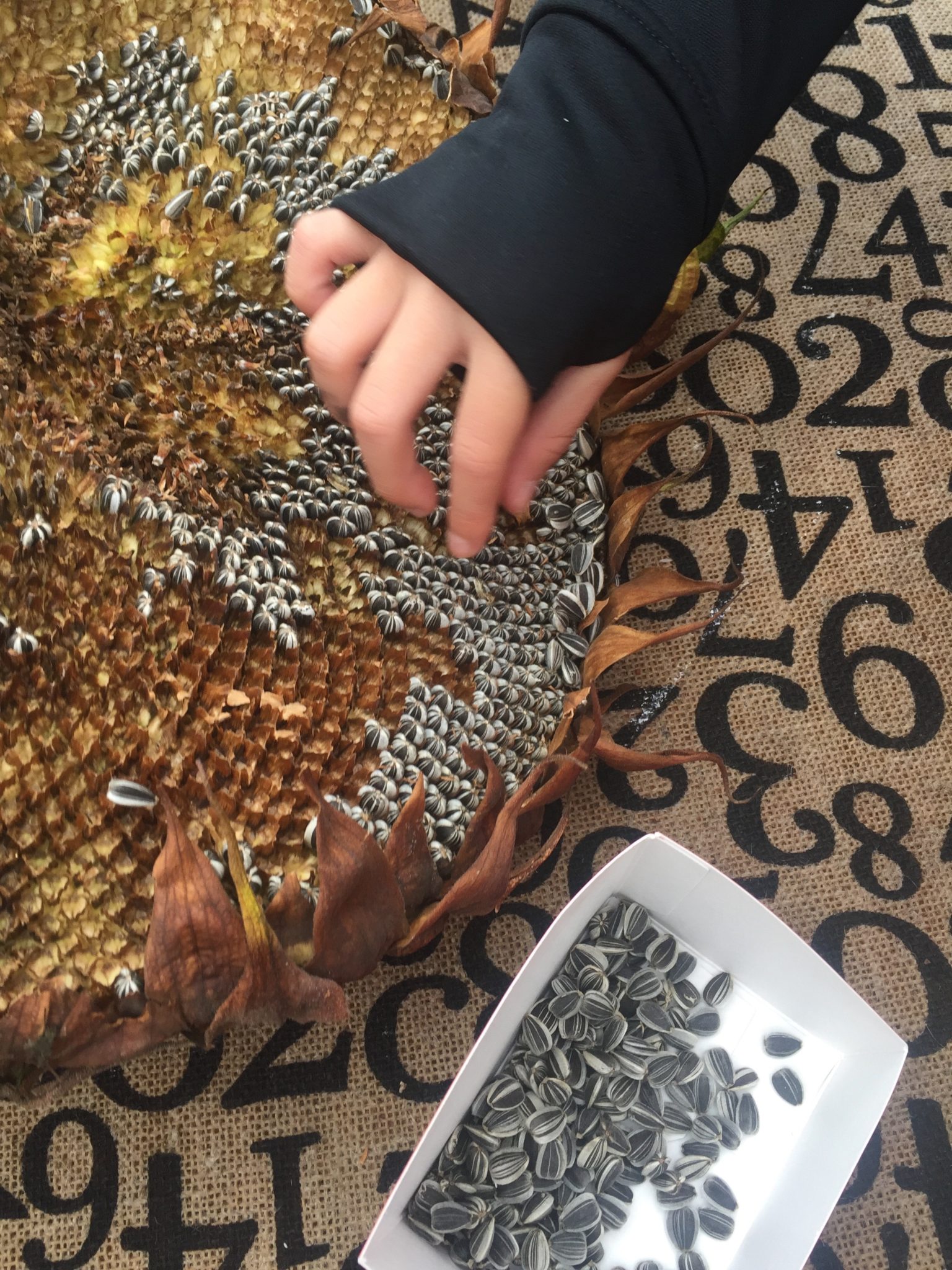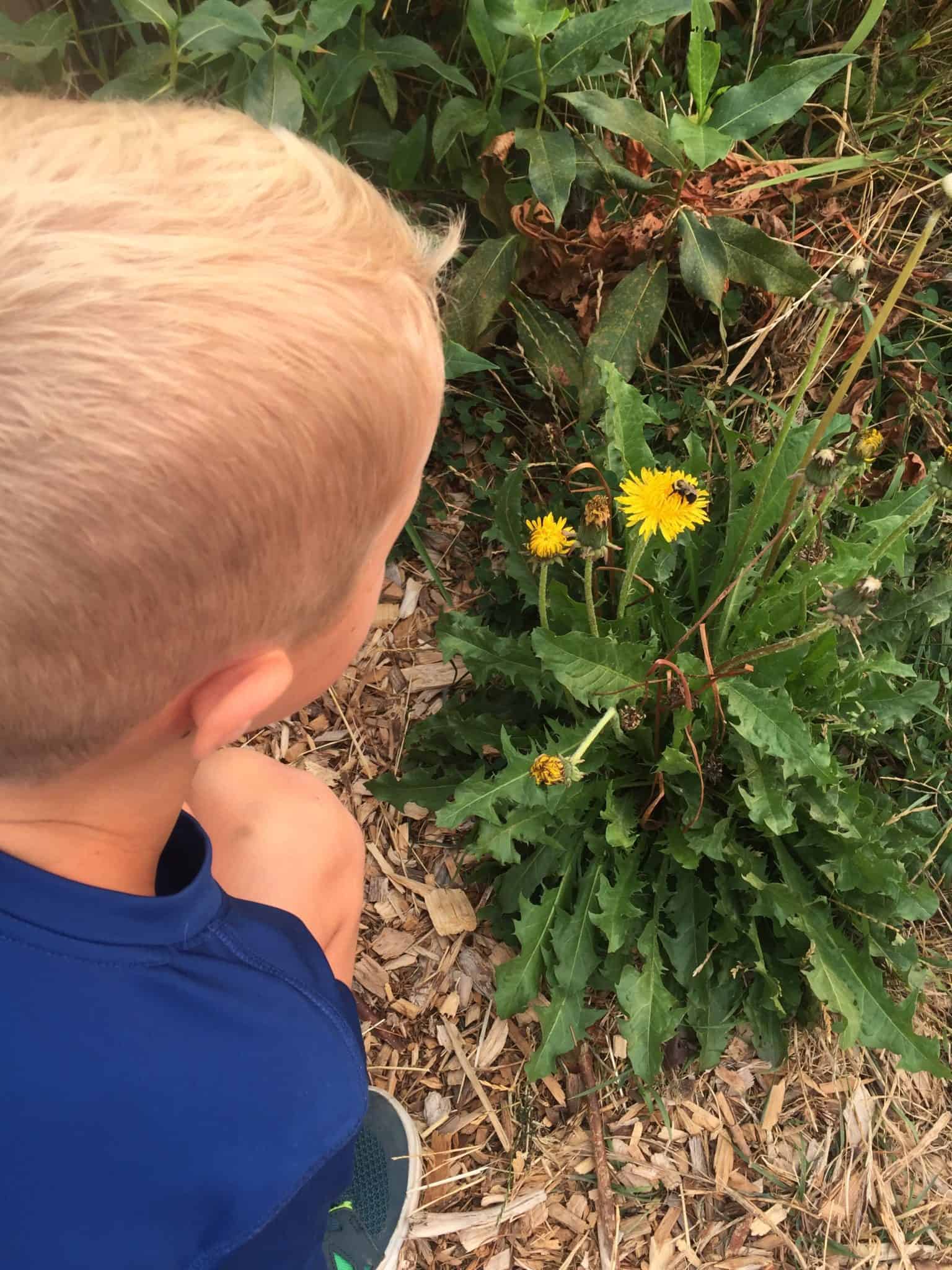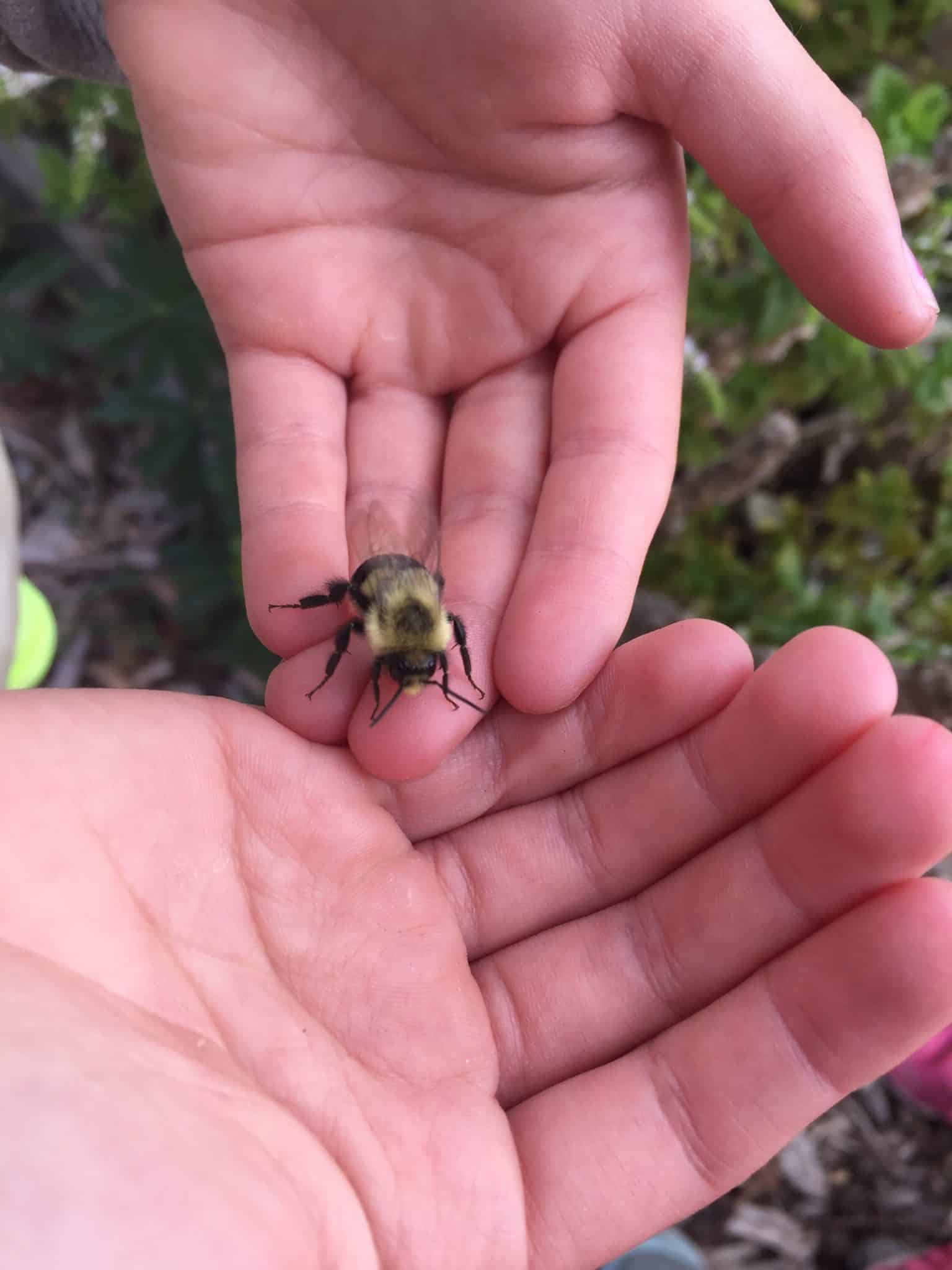- filed under: School Garden Basics, Science Outdoors
Cool Plants Facts For Kids

Learning in a garden offers a wide range of multi-sensory experiences and practical knowledge building. Gardening with kids keeps me tuned in to the lesser known little factoids about plants that kids find super interesting. If you are gardening with your kids, teaching in a school garden (or just love being a garden know-it-all) read on for some cool plant facts for kids!
Incomplete pollination
If you’ve ever eaten an ear of corn, you may have noticed that some ears do not have complete rows of corn. Ever wondered why that is? Each corn kernel is attached to a length of silk. Every single silk must be fertilized in order for a kernel to grow on the cob. The silk is the hairy part you see peeking out the top of an ear of corn and where our pollinator friends get busy to ensure the corn is fertilized. When silk drops away from the ear, fertilization has occurred. Want to try this with kids? Plant a large garden bed with at least 7 or 8 corn starts. (Corn needs to be grown in a larger patch to ensure cross pollination can occur.) When the corn is ready to harvest, pull back the husk and see how many kernels are not pollinated. Incomplete ears of corn means incomplete pollination. What beneficial pollinators can you attract to your garden to improve your crop yield?
Sunflower seeds are the same as corn kernels. Each individual flower on the head of a sunflower must be pollinated in order for a seed kernel to form. When you see a sunflower with a missing kernel, it indicates that flower was not pollinated! (And don’t forget to save a few seeds to plant again next season!)

Feed The Bees
All plants have a purpose and are really only considered ‘weeds’ if they are growing where they compete for resources with crops we want to grow. Learning how to use weeds to our benefit is a long lost skill and dandelions, for example, are oftentimes the first food our bees have access to. Now that we know how important pollination is to food growth, we can start to pay attention to who the pollinators are in our garden. Want to try this with kids? Go on a bee walk. Have the children look specifically for early blooms like crocuses, dandelions and purple thistle. Are these weeds? Can we leave them be so the bees have food in the early season? Want to more about bees? They are fascinating creatures that engage children in life cycle studies and a deeper understanding of food webs. I highly recommend (click for link to Amazon) Bumblebees of North America as well as Bees: An Up-close Look At Pollinators (one of my favourites!)

Open Pollinated Crops
Now that we know more about the importance of pollinators in the garden, we can take a broader view to begin to understand that our pollinator friends are in decline in gardens around the entire world. To ensure your garden is productive, it is essential you have a variety of perennial and annual flowering food sources to attract pollinators throughout the growing season. Interestingly, many gardeners who like to seed save will self-pollinate their crops to avoid cross-pollination that results in next generation seeds that are a hybrid, rather that genetically pure heirloom quality. Want to try this with kids? Plant some pumpkin seeds and some zucchini, or other squash varieties, in your garden in close proximity. Save the seeds from both crops at the end of the season. In the following growing season, plant those saved seeds. What will grow? Which crop will the seeds most resemble? You can learn more about the differences between open pollinated, heirloom and hybrid seeds here.
Garlic leaves
If you haven’t planted garlic before, you should give it a try! Garlic is a great crop for both ornamental and veggie gardens. Did you know that the overall number of garlic leaves on the stem will match the layers of garlic bulb paper on the bulb? Want to try this with kids? Before harvesting your garlic do a leaf audit and then dissect the bulbs by carefully peeling back the layers of paper on the bulb. You’ll need to let them dry first, since wet bulbs will tend to clump the layers together.
Related post: How to grow garlic with kids

Buzz frequency pollination
There are several crops that only release their pollen with a certain “buzz frequency”. The buzzing of bees you hear in a garden is the bee revving up her wing muscles to create the necessary vibrations for the plant to release the pollen she is after. Blueberries are a crop that is buzz pollinated. Want to try this with kids? Get your hands on a tuning fork. If you can replicate the C note on the tuning fork, you can watch the blueberries release their pollen.

Float or Sink?
Ever wondered why apples float? Up to 25% of an apple’s density is made of air, which makes it less dense than water. Want to try this with kids? Gather crops from the garden and predict which ones will float and which ones will sink. Pro tip: In general, pears and zucchini will also float. So will lemons, oranges and bananas, but they don’t grow in our climate so might have to be brought in from the grocery store. You could also try wood chips and wood rounds to see what floats and sinks from the garden. Don’t forget that the age and size of the crop will also determine if it will float or sink, so take that into consideration as you test what floats and what sinks!
Fruit or Vegetable?
Any crop that flowers and then produces a fruit is, botanically, a fruit. Crops that are considered vegetables, like tomatoes or cucumbers or peas are only categorized as vegetables for nutritional and culinary purposes.
Related post: How to grow peas with kids

Pick your poison
Most plants have medicinal qualities. Many plants can kill people. For a very long time, tomatoes were considered poisonous. They’re obviously not, but the leaves, stems and roots of a tomato plant can make you sick if you eat enough of them! Along that same thinking, don’t eat raw potatoes either. And don’t forget that the leaves of rhubarb are poisonous to humans, but the stalks are fine if you find a recipe you enjoy! If you’ve got a group of learners with morbid curiosity, go ahead and learn more about poison gardens, like this one in the United Kingdom! I see all sorts of potential for non-fiction research on this topic!
Related post: How to grow rhubarb with kids with rhubarb recipes

While entire gardens exist, like Alnwick, which are dedicated to growing plants that can kill us, the vast majority of crops grown in school yards are harmless. It is important to remind children that tasting and eating from the garden should be done with adult supervision, particularly if you are introducing any sort of wild foraging to your routine. It’s always a good idea to train children to ask an informed adult before they harvest from the garden. And in the fall, when the mushrooms start to emerge, be sure to find them and discuss the importance of never eating mushrooms found in the school-yard!
Got more plant facts? If you know a fun one, send it along or comment below and we can all learn together! Don’t forget to sign up for my newsletter and join me on Pinterest for more fun ideas when gardening with kids:
